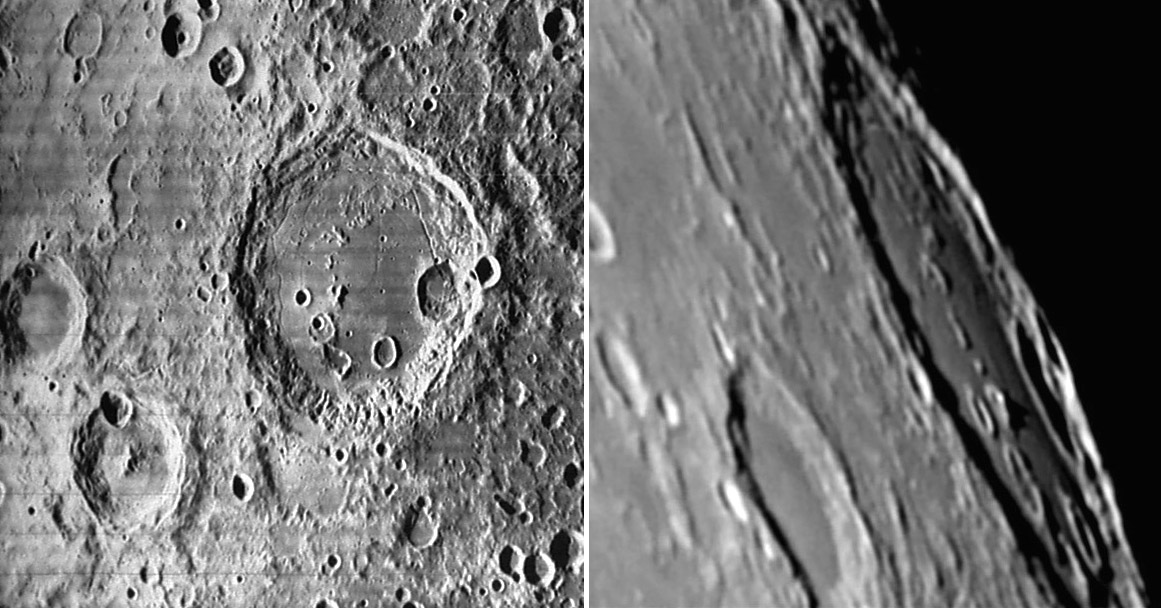
image by Lunar Orbiter IV andDave Nash
The easiest way to provoke a flurry of new images is to publish one on LPOD. Here goes. This is the best telescopic view I have for the 177 km wide crater Gauss near the northeast limb. The Lunar Orbiter overhead view shows that Gauss is an interesting crater with a lava-like floor with two or three groups of rilles, including a wide straight one near the east wall. This makes Gauss a floor-fractured crater. Clementine high sun views show that two or maybe three dark pyroclastic deposits also occur on the floor. One is on the eastern rille, another is in the breached crater at the southern part of the floor, and the possible last one is in Gauss B, the large crater on the eastern rim. Gauss also has a strange curved range of peaks seen also in Dave’s image. They are not central peaks, nor do they seem to be an inner ring of a peak-ring basin. Are they the remnants of a chance impact crater that formed on Gauss’ floor but was partially destroyed by the lava filling? Maybe – I can’t really decide. High sun images might document the pyroclastics, but there is probably little chance to image the rilles, and I don’t know what will answer the question of the peaks.
Technical Details:
17 November 2005 at 00:43UTC, Orion Optics Europa 250mm f/4.8 Newtonian + Televue 5x Powermate + IR-pass filter + ToUCam Pro. 500 frames stacked in Registax.
Related Links:
Rükl chart 16
Lunar Orbiter IV view
Yesterday's LPOD: Orange and Blue Moon
Tomorrow's LPOD: Wall Stories
COMMENTS?
Register, Log in, and join in the comments.



